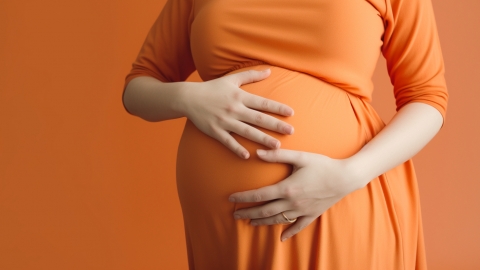What causes a slightly yellow, gel-like discharge 50 days after cesarean section?
Under normal circumstances, the discharge of slightly yellowish, gel-like substance 50 days after cesarean section may be caused by late-stage postpartum lochia, cervical mucus secretion, bacterial vaginosis, endometritis, or intrauterine residue. If discomfort occurs, it is recommended to seek timely medical evaluation and treatment at a正规 hospital. Detailed analysis is as follows:

1. Late-stage postpartum lochia discharge
During uterine involution, residual fetal membrane tissue mixes with secretions, causing lochia to gradually change from red to yellow and become gelatinous in consistency. Maintain external genital hygiene, frequently change cotton underwear, avoid tub baths, and ensure adequate rest to promote uterine recovery.
2. Cervical mucus secretion
After childbirth, rising hormone levels increase cervical glandular mucus production, which mixes with vaginal secretions to form a slightly yellow, gel-like discharge. Keep the external genital area dry, wear breathable clothing, and avoid using irritating vaginal douches.
3. Bacterial vaginosis
An imbalance in vaginal flora leads to overgrowth of anaerobic bacteria, causing inflammation. The discharge becomes yellowish and gel-like with a fishy odor. Treatment under medical guidance may include metronidazole vaginal suppositories, clindamycin phosphate vaginal gel, or oral tinidazole tablets. Avoid sexual intercourse during treatment.
4. Endometritis
Bacterial infection of the endometrium following cesarean section causes inflammation, resulting in thick yellowish, gel-like discharge accompanied by lower abdominal pain. Under medical supervision, medications such as cefuroxime axetil tablets, azithromycin dispersible tablets, or levofloxacin tablets may be prescribed. Rest in a semi-reclining position to facilitate drainage and reduce discomfort.
5. Intrauterine residue
Residual fetal membranes or placental tissue remaining in the uterine cavity after surgery can lead to infection and exudative discharge, which appears as yellowish, gel-like fluid with an unpleasant odor. Medical intervention with dilation and curettage (D&C) is required to remove the retained tissue. Postoperative treatment under medical guidance may include cefaclor sustained-release tablets, metronidazole capsules, or amoxicillin capsules.
In daily life, maintain cleanliness and dryness of the external genital area; avoid unhygienic sexual practices; follow medical advice for regular follow-up visits; eat a light, nutritious diet and avoid spicy or irritating foods; get sufficient rest and avoid excessive fatigue to support overall recovery.




